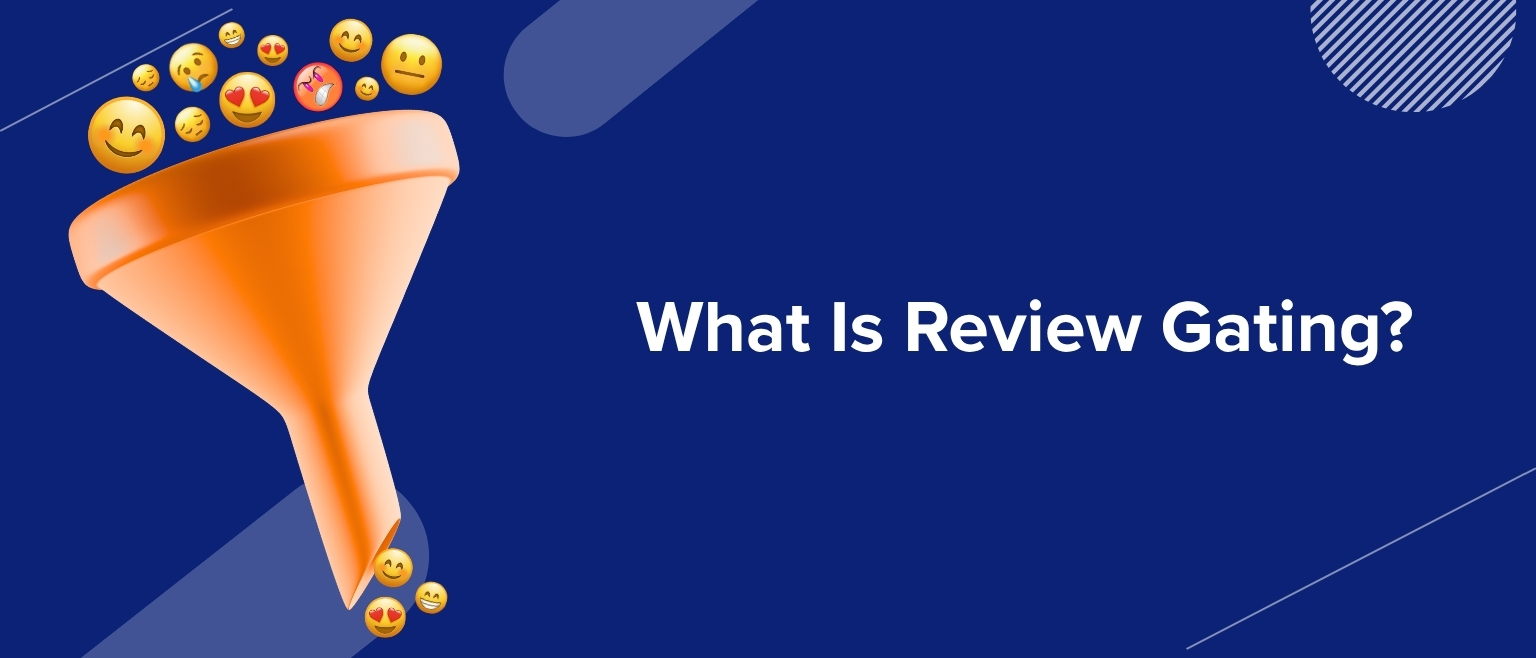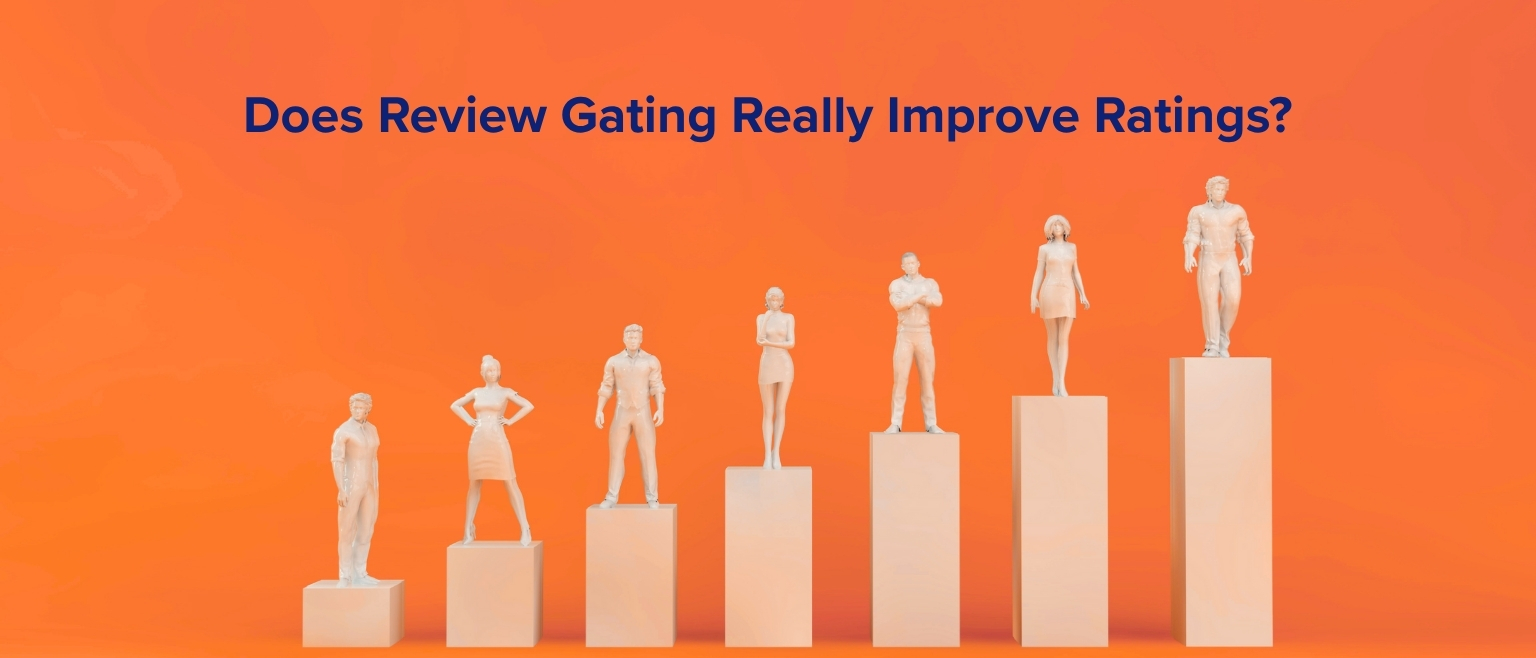
Online reviews are one of the most powerful tools influencing customer decisions today. In the quest for a perfect reputation, many businesses have turned to a strategy known as review gating—filtering feedback to ensure only happy customers are asked to leave public reviews. While it may seem like a smart way to protect your brand image, this practice is now not only frowned upon but explicitly banned by Google.
In this blog, we’ll break down exactly what review gating is, why it poses risks to your business, and what actually happens when you stop doing it. You’ll learn how embracing open feedback can increase your review volume, enhance your credibility, and ultimately lead to better long-term results. If you’re still using gating—or unsure if you are—this guide will help you decide if it’s time to move on for good.
Understanding What Is Review Gating (and How It Works)

To put it simply, what is review gating? It’s a process that filters customer feedback before it becomes public. Typically, a business asks customers how they felt about their experience, and only those who respond positively are encouraged to leave a public review. Those with negative experiences are either redirected to a private feedback form or not asked to leave a review at all.
At face value, this seems like a reasonable way to manage reputation. But there’s a significant problem—this strategy manipulates the review landscape and gives a distorted view of the actual customer experience.
That’s why Google officially banned review gating, and why more businesses are embracing open, transparent feedback practices today.
Why Google Banned Review Gating
Google made its position clear: review gating is against its policies. Why? Because it undermines the credibility of the review ecosystem. Gating paints an overly rosy picture of a business by silencing unhappy voices, skewing ratings, and misleading potential customers.
More importantly, engaging in review gating today could result in penalties, such as the removal of reviews or even restrictions on your business profile.
Does Review Gating Really Improve Ratings?

Let’s unpack a common misconception.
The Myth of Higher Star Ratings
Businesses often adopt gating with the assumption that they’ll see a significant boost in their star ratings. But the data tells a different story.
When companies stop gating and start requesting reviews from all customers, the average star rating typically remains stable. For example, businesses that previously gated saw only a marginal decrease in star ratings once they removed the filter—but not enough to affect their overall public perception.
What did change dramatically, however, was review volume.
What Changes When You Stop Gating?
Once review gating is removed, the number of reviews received increases significantly. In many observed cases, businesses saw a 50–70% jump in review volume.
This increase in volume has several benefits:
- More recent reviews help build trust.
- A wider range of feedback provides a fuller picture of your service.
- It strengthens your visibility on search platforms due to consistent review activity.
Review gating, rather than protecting your reputation, often slows down your growth in review acquisition.
Review Gating: Barrier or Opportunity?

Think of review gating not as a safety net, but as a roadblock to better engagement. While it may feel risky to open the door to all feedback, doing so creates a culture of trust, accountability, and continuous improvement.
When you actively listen to all voices—positive or negative—you create opportunities to:
- Resolve problems quickly
- Identify trends in customer concerns
- Build credibility through authentic interaction
Building Trust Through Open Feedback

Transparency is more than a buzzword—it’s the foundation of modern reputation management.
Customers want to see real experiences, not curated ones. They’re more likely to trust a business that owns its mistakes and responds thoughtfully to criticism than one with only perfect five-star reviews. By eliminating review gating, you give your audience the transparency they seek—and earn their trust in return.
My Review Concierge – Your Transparent Review Management Partner
Navigating the world of online reviews can feel overwhelming, but it doesn’t have to be. At My Review Concierge, we help businesses build a genuine, impactful review presence—without relying on outdated gating strategies.
We believe that open feedback fuels improvement. That’s why our approach focuses on transparency, engagement, and long-term reputation growth.
Before you develop your review strategy, it’s crucial to understand how you’re currently performing.
Get Your Review Performance Scorecard
Want to know where your business stands in the review ecosystem?
Fill out the form below to receive your personalized Review Performance Scorecard within minutes. This valuable tool will assess:
- Your average review score vs. industry benchmarks
- Your total review volume and how it compares to competitors
- Your level of customer engagement
- A link to your personalized demo video with next steps
With the right insights, you can develop an action plan that boosts visibility, builds trust, and accelerates growth—all without the risks of review gating.




